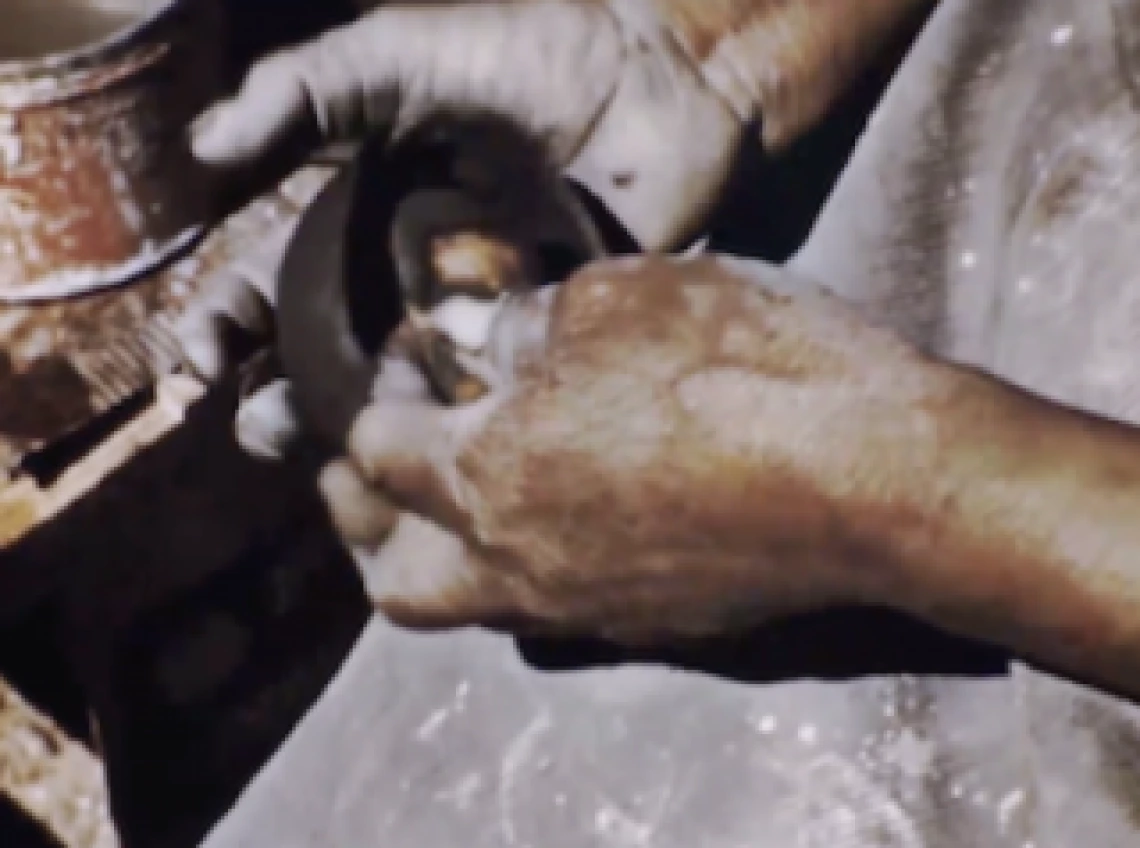Tribesourcing Southwest Film Project, Advancing Indigenous Voices

The Haury Program aims to promote innovative and distinctive projects advancing Indigenous voices. For this edition, we talked with Dr. Jennifer Jenkins, professor at the UArizona's English Department and the Southwest Center, and Principal Investigator of the Tribesourcing Southwest Film Project.
The Tribesourcing Southwest Film Project seeks to preserve and recontextualize a UArizona-based collection of nearly 500 mid-20th century educational and sponsored films about Native peoples of the U.S. Southwest. The project aims to rebalance the historical record, intentionally shifting emphasis from external perceptions of Native peoples to the voices, knowledge, and languages of the peoples represented in the films by the participatory recording of new narrations for the films. The Tribesourcing Southwest Film Project received the 2020 National Digital Stewardship Alliance/Digital Library Federation Innovation Award.
 The Tribesourcing Southwest Film Project started as a film archiving and educational project when a professor of history at Northern Illinois University who collected films documenting cultural practices and lifeways of Indigenous peoples retired and was looking for an institutional steward to take over the films. The American Indian film gallery consists of nearly 500 films he started collecting in the 70s when school and public libraries were getting rid of their old 16-millimeter film collections to make way for new technologies, at the time, the lighter, easier-to-store VHS format.
The Tribesourcing Southwest Film Project started as a film archiving and educational project when a professor of history at Northern Illinois University who collected films documenting cultural practices and lifeways of Indigenous peoples retired and was looking for an institutional steward to take over the films. The American Indian film gallery consists of nearly 500 films he started collecting in the 70s when school and public libraries were getting rid of their old 16-millimeter film collections to make way for new technologies, at the time, the lighter, easier-to-store VHS format.
When the NIU professor put out the call of interest, Dr. Jenkins didn't think twice. She spent a 4th of July weekend writing and submitting a proposal to bring the American Indian film gallery collection to the University of Arizona and successfully beat other nationally renowned institutions. She was sure the university was the right place to house the film collection. Indeed, it is the right place; the university established the first master's and Ph.D. programs in American Indian Studies in the country.
The films arrived at the university digitized in a rudimentary system, "There wasn't any metadata. It was just the films organized by tribal name, with a player. Then, slowly, I started having students work on researching the films and putting them into cultural context." The original 16-millimeter films are at the Library of Congress for their preservation, to which the university has access.
Dr. Jenkins started working with students from the School of Information's Knowledge River Project to assist her review the films, somehow depending on their own particular background or interests, including Pacific Northwest Alaska, Navajo, Hopi, and Latin American Indigenous students. That's when Dr. Jenkins realized something was missing in the films: the voices of the communities represented on them.
Dr. Jenkins decided to "take [the films] back to the communities and invite them to interpret them. It seemed like recording alternate narrations and putting them side by side with the original would be an incredibly useful teaching tool about the difference in perspective over time and a bold illustration of insider versus outsider understandings of culture, what cultural competency really means. Taking back the information and its control by the people that the information describes is inherently decolonizing. It wasn't like a flash of inspiration; it was just the obvious that needed to happen. In that sense, it's a kind of reclamation project."
Dr. Jenkins mentions the project allows to post more than one narration on any one film, including narrations in Indigenous languages. That way, "we can get as many voices as want to respond to a particular film." The latter is essential since there are multiple stories from elders, women, and youth waiting to be told and heard. "Watching and listening to the films could be quite an emotional experience for some, and we always proceed with respect when working together with the narrators." The narrations are the real focus of this project in terms of reclaiming control of the narrative.
The films contain valuable historical visual imagery of people and natural landscapes. The latter is helpful for those studying land-use change, droughts, and climate change effects in Indian Country. "It would be great to have an environmental science student narrating some of the films and talk about those landscape changes," mentioned Dr. Jenkins.
If you are a Native student or know someone from any of the tribes represented in the films and are interested in recording a narration either as a personal endeavor or as part of a class or thesis project, please contact Dr. Jenkins. The project is committed to paying the narrators for their expertise and time – except when getting course credits.
Dr. Jenkins holds an M.A. in English from the University of Chicago, an M.A. in Library and Information Science and a Ph.D. in Literature from the University of Arizona. She is a professor at the UArizona's English Department and the Southwest Center. She works at the intersections of literature, film, and archives. Dr. Jenkins grew up spending her summers visiting Indian Country, particularly in Arizona and New Mexico, with her grandparents. During these visits, Dr. Jenkins learned to appreciate and respect Indigenous culture and knowledge. She sees the Tribesourcing Southwest Film Project as both an academic and personal endeavor.
